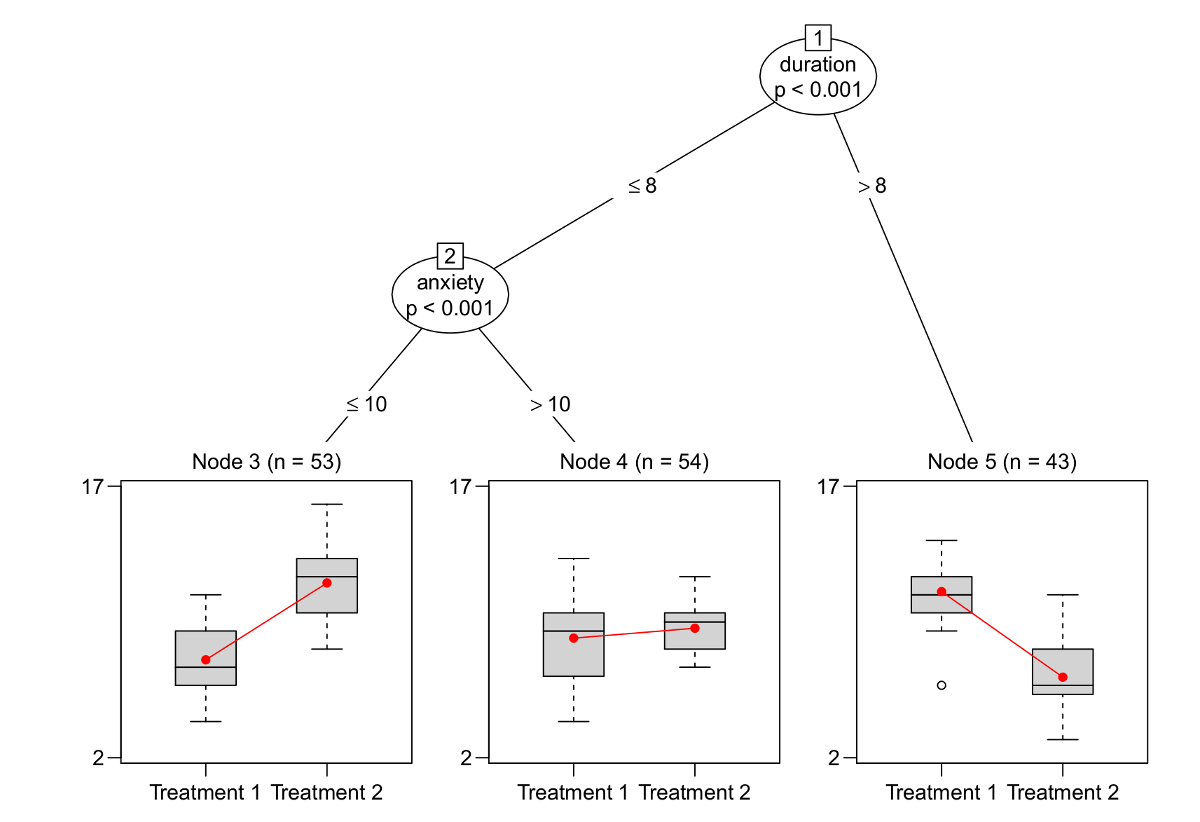GLMM trees published in BRM
Citation
Marjolein Fokkema, Niels Smits, Achim Zeileis, Torsten Hothorn, Henk Kelderman (2018). “Detecting Treatment-Subgroup Interactions in Clustered Data with Generalized Linear Mixed-Effects Model Trees.” Behavior Research Methods. Forthcoming. doi:10.3758/s13428-017-0971-x
Abstract
Identification of subgroups of patients for whom treatment A is more effective than treatment B, and vice versa, is of key importance to the development of personalized medicine. Tree-based algorithms are helpful tools for the detection of such interactions, but none of the available algorithms allow for taking into account clustered or nested dataset structures, which are particularly common in psychological research. Therefore, we propose the generalized linear mixed-effects model tree (GLMM tree) algorithm, which allows for the detection of treatment-subgroup interactions, while accounting for the clustered structure of a dataset. The algorithm uses model-based recursive partitioning to detect treatment-subgroup interactions, and a GLMM to estimate the random-effects parameters. In a simulation study, GLMM trees show higher accuracy in recovering treatment-subgroup interactions, higher predictive accuracy, and lower type II error rates than linear-model-based recursive partitioning and mixed-effects regression trees. Also, GLMM trees show somewhat higher predictive accuracy than linear mixed-effects models with pre-specified interaction effects, on average. We illustrate the application of GLMM trees on an individual patient-level data meta-analysis on treatments for depression. We conclude that GLMM trees are a promising exploratory tool for the detection of treatment-subgroup interactions in clustered datasets.
Software
https://CRAN.R-project.org/package=glmertree
Illustration
GLMM tree for treatment-subgroup interaction in a motivating artificial dataset.
